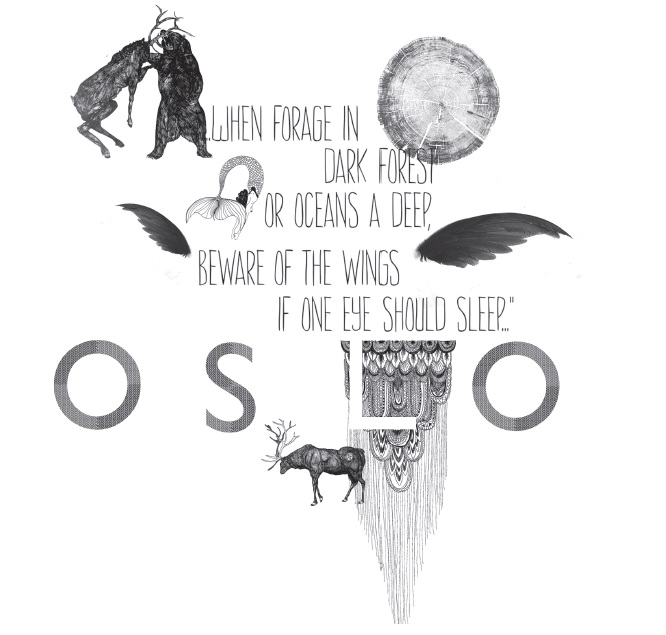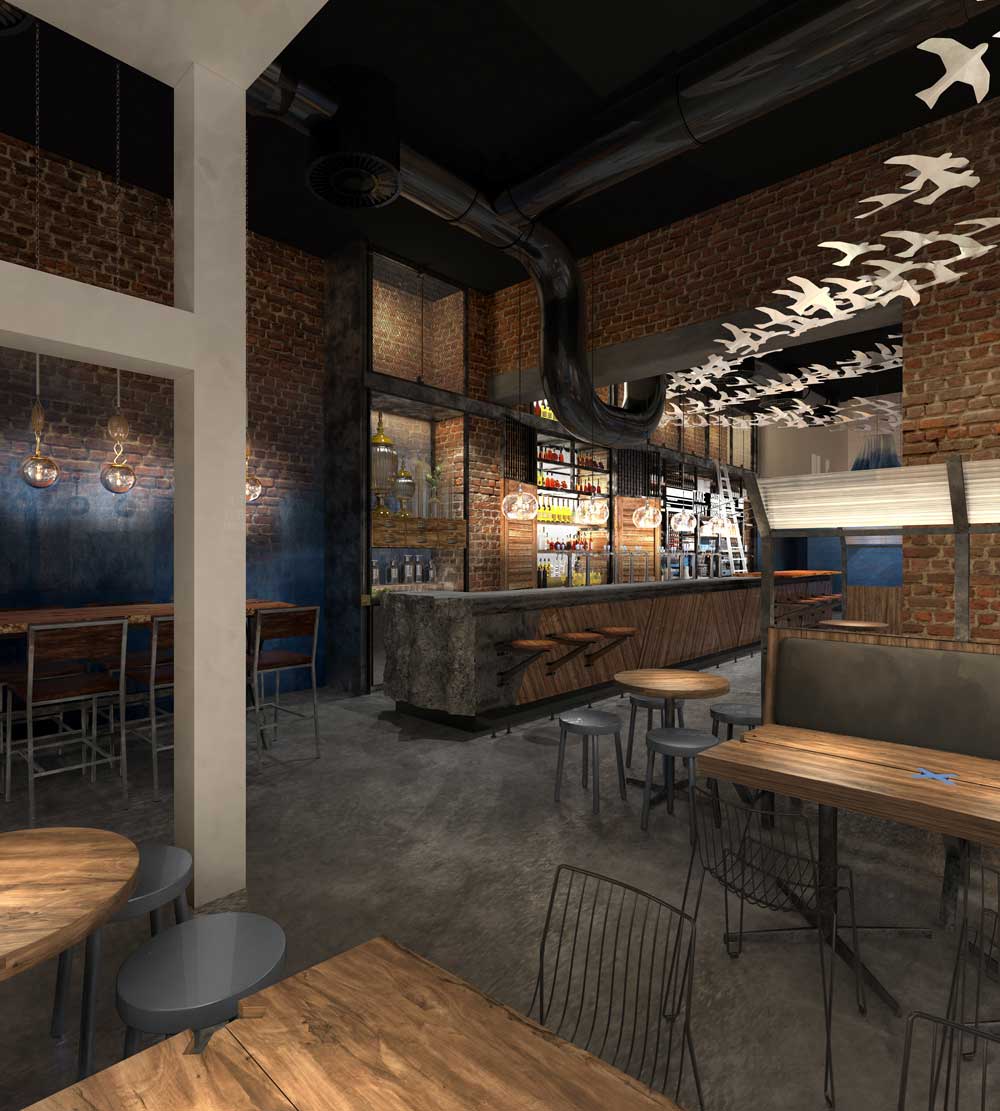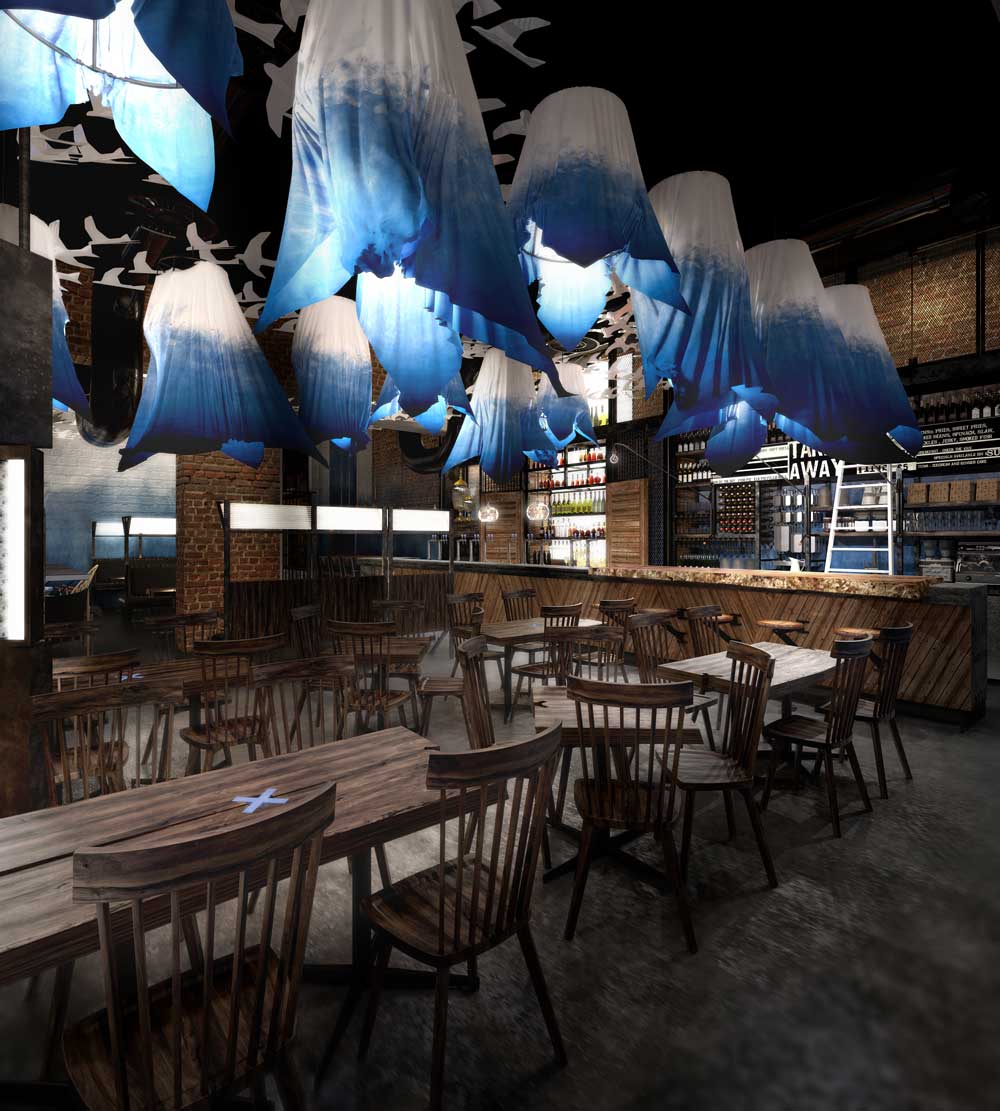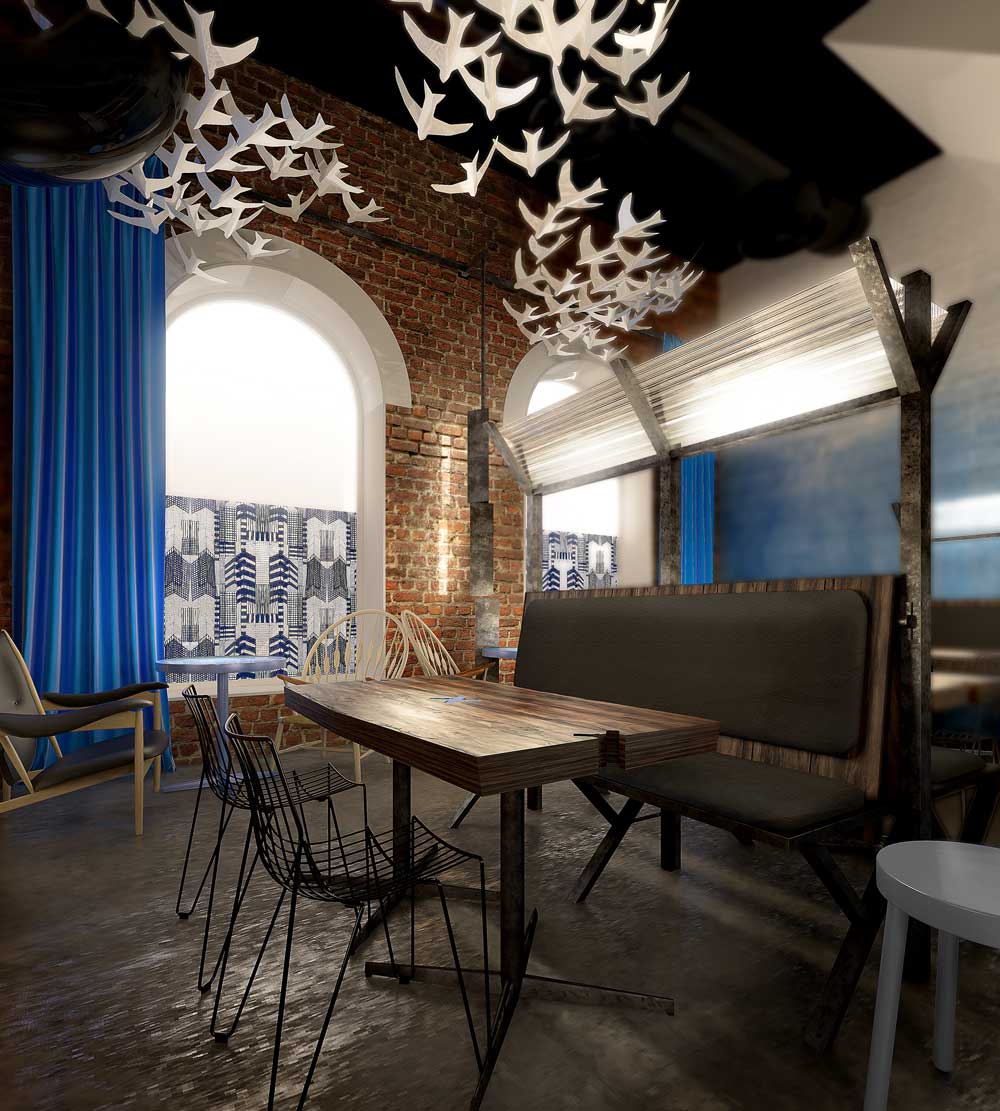Norwegian folklore-based designs for new London venue Oslo
Consultancy The House With has created the branding and interiors for new east London venue Oslo, themed around Norwegian myth and fairy-tales.

The designs are inspired by a Scandinavian aesthetic, and draw on the ‘theatrical nostalgia of Norwegian folklore… oceans, forests and mythical creatures’, according to The House With.
Andy Lampard, creative partner at The House With, says, ‘George [Akins] the owner came up with the name as his mother’s from Olso, and he liked the word. He was interested in a Scandinavian design but not necessarily minimal – something more luxurious.
‘It’s in an area full of artists so we wanted to give it a creative twist’.

Throughout the venue graphic panels will show illustrations by Jon Powell, inspired by Norwegian fairy-tales and traditional sea shanties. The stairwell area will show pictures focussing on a ‘dark Norwegian forest’ while the upstairs music venue will be have more of a ‘Brothers Grimm, dark night-style fairy-tale undertone’, says Lampard.
The branding draws on the restaurant’s menus, with the wheel-like logo inspired by cattle branding tools, referencing the meat; and an anchor-like second logo, used in the interiors, referencing the fish.

The interior features include raw oak slabs, reeded glass, large velvet curtains and linen shades, aiming to create ‘ a sense of faded grandeur – true to the building’s era’, says The House With.
The consultancy says, ‘A beautiful piece of architecture, simply dressing and accentuating the space with the envisaged story was all that was needed.
‘This historical character provided us with a great starting point of the grand high ceilings, exposed original brickworks and impressive Victorian arched windows.’

The restaurant, bar and music venue opens this week in Hackney in a two-story building originally built by North London Railway Company as Hackney Central railway station in 1870.
It was later used as a ticket office during World War II, and is the only surviving part of the original station, which was closed in 1970s.

-
Post a comment




